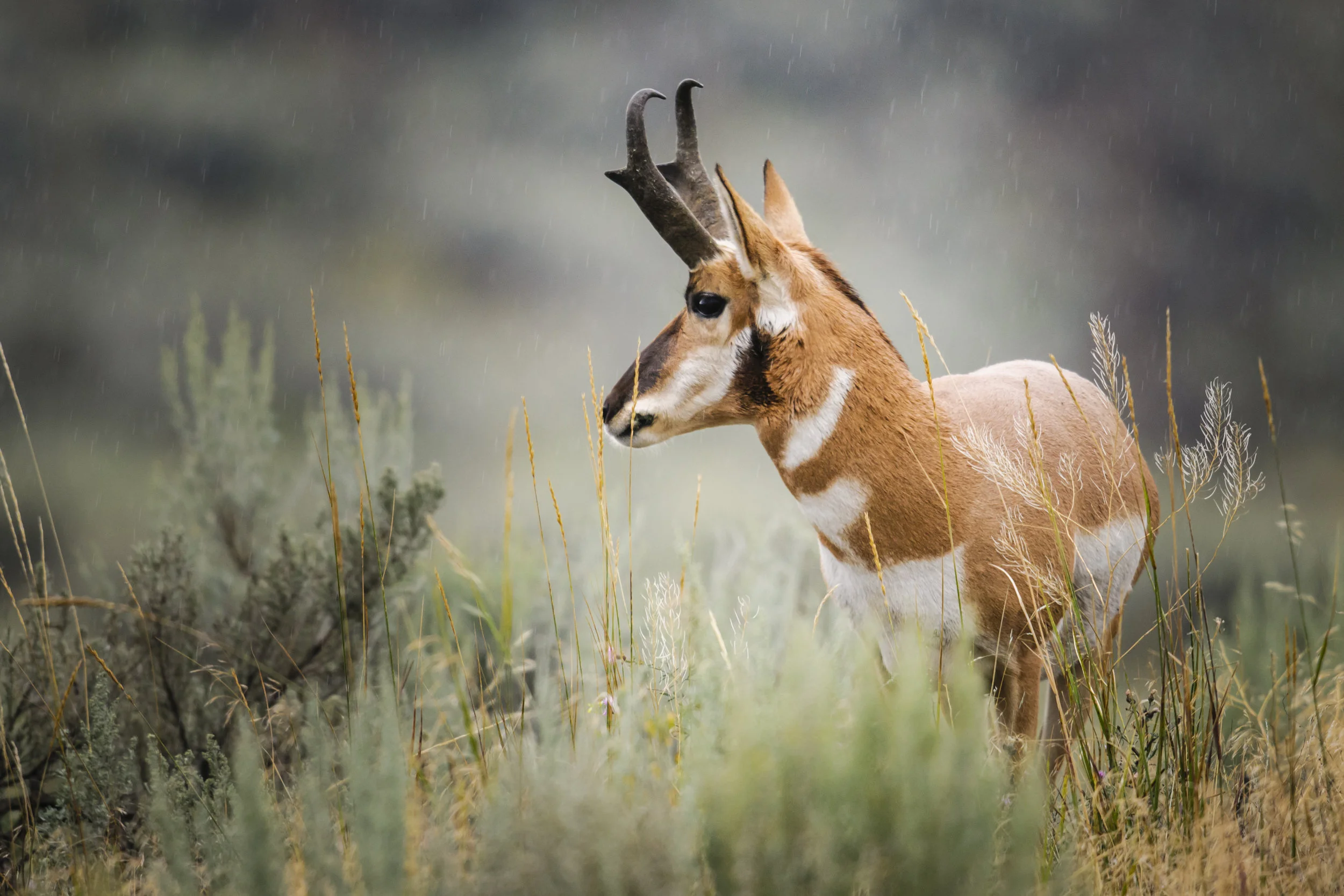Pronghorn Antelope
"Wir Fliegen" by Shannon Beaumont (ink and digital)
“Pronghorns are gorgeous, fast, and are the only surviving member of the Antilocapridae. Horns that shed? Yes! What’s not to like? Especially the fact that they are descendants and reminders of the ancient species that used to roam the plains and so very different from the other, more modern artiodactyls makes them so special. Unfortunately, like with so many species in this book, their survival depends on their environment.”
Habitat
Pronghorns currently have scattered, but have widespread distribution throughout western North America. They inhabits grasslands, brushlands and deserts and their range extends from southern Saskatchewan and Alberta in Canada south through southwestern Minnesota, central Texas to coastal southern California.
Family Life
The pronghorn isn’t an antelope. Even though it’s similar in appearance and behavior to them, it actually belongs to a family of its own. It is active both day and night, with slight peaks just before sunrise and after sunset. During autumn and winter, the pronghorn often forms large, loose groups as many as 1,000 individuals of all ages and both sexes. In spring and summer however, these large herds segregate into much smaller groups of 3 to 25 and segregated by sex.
Lifespan
The lifespan is typically 7 to 10 years.
Hunting Habits/Diet
The diet of pronghorns consists almost entirely of non-woody flowering plants and brush. Grass makes up a very small part of the diet. Sagebrush can be critical to pronghorn survival during harsh winters when the snow is deep and other forage is unavailable. Pronghorns typically spend 40 to 60 percent of their time feeding.
Population
At one time there were thought to be 35 million or more pronghorns in their original range. During the latter half of the 19th century, numbers were reduced by 99% due to hunting and loss of habitat to agriculture, settlement, and fencing tracts of land, falling to 13,000 by 1915. As of 2000, population estimates were 32,000 for Canada, 1,200 for Mexico, and 765,200 for the United States.
Fun Fact
The pronghorn is the second fastest land mammal in the world, after the cheetah.
Why are they Endangered?
The two biggest threats to their survival come from hunters who kill them for sport and for meat, and from habitat destruction. Pronghorn herds also follow the same migration pathways as their ancestors. Habitat fragmentation from fences, roads and energy development create barriers and threaten the animal’s ability to safely return to seasonal breeding and wintering grounds. Plus, energy development can also degrade vital grounds, displacing herds and fragmenting seasonal migration routes—all which poses a threat to their lifestyle.
Status
Least Concerned


